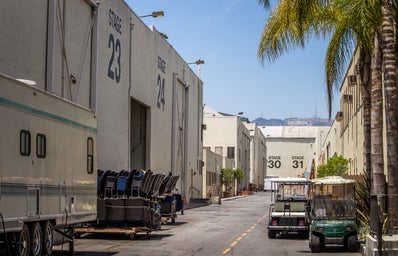“There’s a point far out there when the rules aren’t weapons anymore; they’re shackles, letting the bad guy get ahead.”
Those were the lines through which The Dark Knight trilogy (2005-2012) justified chaos, societal disparity, and mass unrest. It did so with congruent storytelling, tight cinematography, and with two paradigm-shifting performances in antagonism across three movies! Christopher Nolan changed comic books forever, with his idea of Batman. But the character that he reconstructed from the most rudimentary psychological grains was the Joker.
It’s been seven years since The Dark Knight Rises (2012). There have been other interpretations of The Joker. Some tried too hard to be radical, while the others failed to bring out any radicalism at all.
Enter Joaquin Phoenix
Over the course of the decade, The Joker, as a character, has become a cult in itself. Be it the comic book aficionados, the cinema buffs, or the mainstream movie-going audience, everyone is a part of that cult. And yet, Mr. Phoenix managed to capture everyone’s imagination, seamlessly. From the haunting mirror shots, the broken dances oozing tragic beauty, to the harrowing insanity in his eyes, it was a deep dive into the psyche of The Joker.
There were subtle reverberations of Martin Scorsese’s Taxi Driver (1973) felt throughout the movie. With a society, on the brink of collapse, a government full of lies, and multitudes of volatile elements on thin ice, Gotham is portrayed to explode any minute! The set design also mirrors Arthur Fleck’s attire in the subtlest possible ways. That backstage shot of Arthur’s, before going up on the Murray Franklin Show is a great example of just how gorgeously nuanced the set was!
Over the course of the last 30-minutes of reel-time, Gotham’s social structure had seemingly collapsed, fuelled by a myriad of reasons. With the widespread economic disparity in the city, apathy spread like wildfire. Everyone wanted to bring down the rich to uplift the poor. No one wanted to listen anymore. Gotham had become a suppressed timebomb, whose ticks no one could hear, but everyone could feel! All it took was one detached, deranged clown, with a point to make against the society that violated him mentally, to liberate Gotham into flames! This whole concept is vividly reminiscent of James McTeigue’s V for Vendetta (2005), where a man in a Guy Fawkes mask channels the angst of a whole city to rebel against the dictating government.
At a psychoanalytical level too, the movie was astoundingly accurate! Arthur Fleck’s only consistent connection to the outside world was his bed-rested mother. The irony in their equation is one of the most beautiful aspects of the movie. His mother was the single, thin string that held his life and his mind together. He understood that, eventually. This sets up perhaps the darkest scene in the entire movie – Arthur asphyxiating his mother to death in her hospital bed. His liberation had no bounds from thereon. He was finally free! The thumping background score added a touch of minimalist surrealism towards the end too, with Cream’s White Room (1968) setting the tone for what was to come next!
Very few movies manage to juxtapose the two realities of their psychoanalytical characters before and after their moment of liberation. But, Joker did so effortlessly!
It’s not the perfect movie. It is dark, it is tragic, and it is evocative! There’s so much beauty in it all. It’s art in motion.



